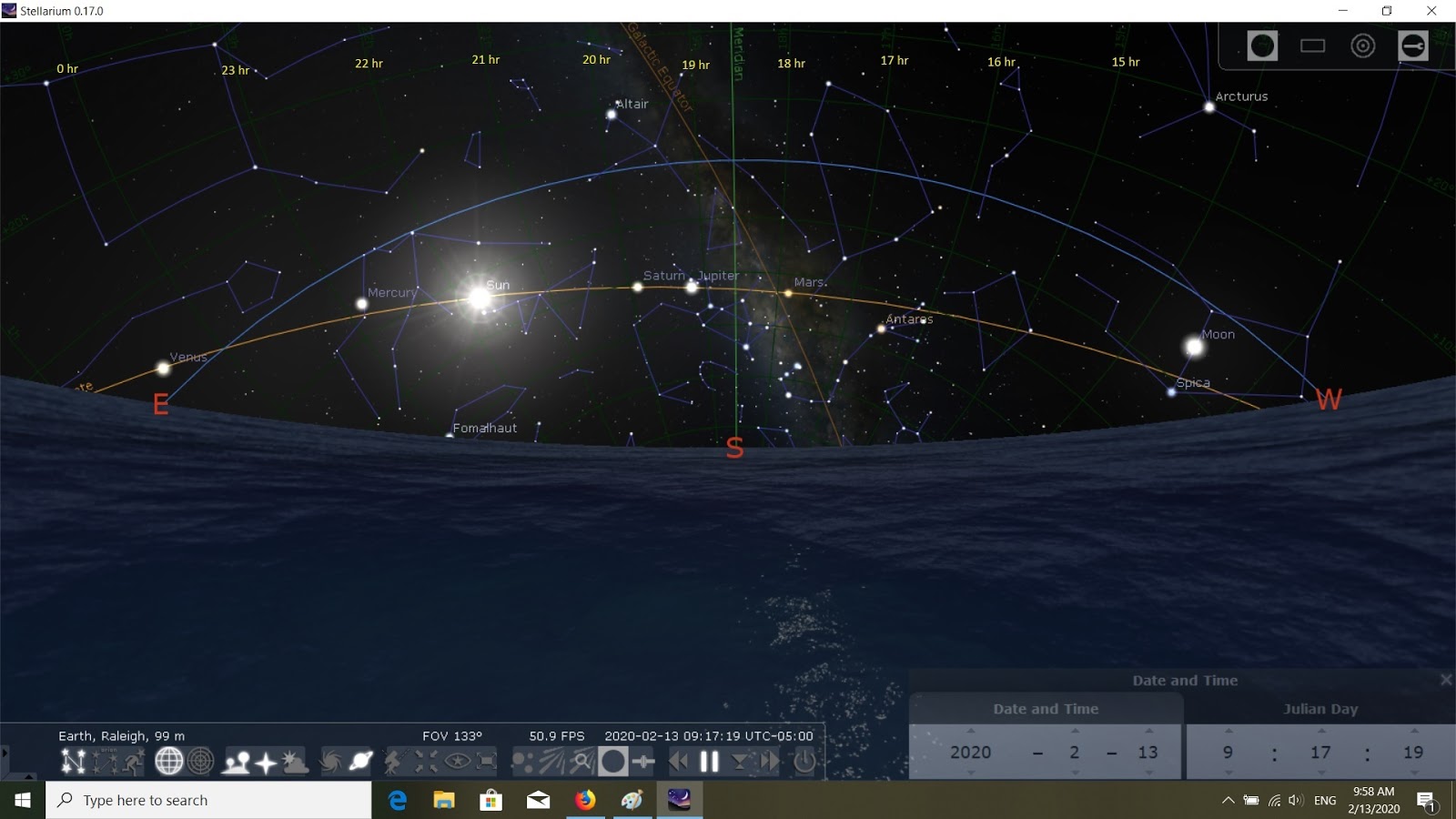


It is best seen in the southern sky late in August or early September when the moon sets around sunset. The Milky Way gets less visible based on the earth's movement on its axis. Don't rely on Stellarium to show you its brightness. The Milky Way will be equally visible throughout the night, so long as you are between two hours before or after the sun. You can search the sky and not see it with your eyes, that's why it is important to know where it is. Keep in mind that the Milky Way isn't nearly as visible to the naked eye as it is to a long exposure in a camera. Increase the brightness to your satisfaction. The third item down is Milky Way brightness. Click on it and in the main view window SKY should be the default. Go to the Sky and Viewing Options in the tool bar on the left side of the screen. The fact that the Milky Way doesn't appear bright in Stellarium is probably due to its setting. Here is a link to a Milky Way photo I made last year in early October in Wisconsin. If you are interested in night photography, you might find my article on the subject helpful. By October 6, the moon is rising at 5:23 PM, is nearly full and will be in the sky until nearly 6:00 AM so getting a good photo of the Milky Way will be almost impossible. The moon sets at 10:52 PM, so the best time to shoot the Milky Way will be after moon set. On September 30, the sun sets in Burlington at 6:35 PM which means you won't have a totally dark sky until 8:35. You need a dark sky which means two hours after sunset or before sunrise. I think your best opportunity for photographing the Milky Way will be on September 30.

Shooting the Milky Way is problematic when the moon is in the sky. Kcflanders, I am very familiar with Stellarium and photographing the Milky Way.


 0 kommentar(er)
0 kommentar(er)
